| [1] Wan YM, Li YH, Xu ZY, et al. Therapeutic plasma exchange versus double plasma molecular absorption system in hepatitis B virus-infected acute-on-chronic liver failure treated by entercavir: A prospective study. J Clin Apher. 2017;32(6): 453-461. [2] Gerth HU, Pohlen M, Pavenstädt H, et al. Extracorporeal liver support of liver failure. Z Gastroenterol. 2017;55(4):383-393. [3] Jain V, Dhawan A. Extracorporeal liver support systems in paediatric liver failure. J Pediatr Gastroenterol Nutr. 2017; 64(6):855-863. [4] Zhou YD, Yang L, Han QF, et al. Clinical effect of combined artificial extracorporeal liver support therapy for toxic hepatic failure. Zhonghua Lao Dong Wei Sheng Zhi Ye Bing Za Zhi. 2017;35(1):51-53. [5] Li M, Sun J, Li J, et al. Clinical observation on the treatment of acute liver failure by combined non-biological artificial liver. Exp Ther Med. 2016;12(6):3873-3876. [6] Hassanein T. Current state of knowledge of hepatic encephalopathy (part IV): Management of Hepatic Encephalopathy by liver support systems. Metab Brain Dis. 2017;32(2):303-306. [7] 黄盛玲,黄德绪,闫冰,等.吸附材料在血液灌流技术中的应用研究进展[J].广西医学,2016,38(5):695-697.[8] 刘贻声,张林,洪良通,等.血液灌流器吸附材料研究进展[J].中国医疗器械信息,2014,(8):15-20.[9] 李荣华,傅蕾,黄燕,等.双重血浆分子吸附治疗肝衰竭的临床研究[J].中国现代医学杂志,2018,28(1):78-82. [10] 唐娟,邓薇,唐静,等.双重血浆分子吸附系统对慢加急肝衰竭患者血清炎性因子、肝功能及免疫功能的影响[J].疑难病杂志, 2017, 16(9):903-906,910. [11] Karvellas CJ, Subramanian RM. Current evidence for extracorporeal liver support systems in acute liver failure and acute-on-chronic liver failure. Crit Care Clin. 2016;32(3): 439-451. [12] Chen JJ, Huang JR, Yang Q, et al. Plasma exchange- centered artificial liver support system in hepatitis B virus-related acute-on-chronic liver failure: a nationwide prospective multicenter study in China. Hepatobiliary Pancreat Dis Int. 2016;15(3):275-281. [13] Hoshino T, Takagi H, Suzuki Y, et al. Fatal fulminant hepatitis caused by infection with subgenotype A1 hepatitis B virus with C1766T/T1768A core promoter mutations. Clin J Gastroenterol. 2016;9(3):160-167. [14] Matsuura T, Yoshimaru K, Yanagi Y, et al. Massive pulmonary hemorrhage before living donor liver transplantation in infants. Pediatr Transplant. 2016;20(1):89-95. [15] 叶晓玲,程书权,杨景毅,等.不同人工肝方法治疗亚急性重型肝炎的疗效对比研究[J].重庆医学,2015,44(27):3775-3778.[16] 何小凤,罗玲,袁春兰,等.两种人工肝方法治疗重型乙型肝炎的近期疗效对比分析[J].重庆医学, 2017,46(18):2475-2477, 2480. [17] 周宪伟, 房忠卫.血浆凝血酶原活动度和血清甲胎蛋白、前白蛋白联合检测在人工肝血浆置换治疗重型肝炎的临床意义[J].中国医师进修杂志,2017,40(9):773-776. [18] 朱其荣, 王川林, 刘娇,等.胆红素吸附联合血浆置换对治疗肝衰竭近期疗效影响的相关性研究[J].川北医学院学报, 2017,32(4): 587-590. [19] Yamamoto H, Nakae H, Uji Y, et al. Plasma adiponectin levels in acute liver failure patients treated with plasma filtration with dialysis and plasma exchange. Ther Apher Dial. 2015;19(4): 349-354. [20] Zhou PQ, Zheng SP, Yu M, et al. Prognosis of acute-on-chronic liver failure patients treated with arti?cial liver support system. World J Gastroenterol. 2015;21(32): 9614-9622. [21] Larsen FS, Schmidt LE, Bernsmeier C, et al. High-volume plasma exchange in patients with acute liver failure: An open randomised controlled trial. J Hepatol. 2016;64(1):69-78. [22] Ide K, Muguruma T, Shinohara M, et al. Continuous veno-venous hemodiafiltration and plasma exchange in infantile acute liver failure. Pediatr Crit Care Med. 2015;16(8): e268-274. [23] Arroyo V, Moreau R, Jalan R, et al. Acute-on-chronic liver failure: A new syndrome that will re-classify cirrhosis. J Hepatol. 2015;62(1 Suppl):S131-143. [24] Zhou N, Li J, Zhang Y, et al. Efficacy of coupled low-volume plasma exchange with plasma filtration adsorption in treating pigs with acute liver failure: A randomised study. J Hepatol. 2015;63(2):378-387. [25] Qin G, Shao JG, Wang B, et al. Artificial liver support system improves short- and long-term outcomes of patients with HBV-associated acute-on-chronic liver failure: a single-center experience. Medicine (Baltimore). 2014;93(28):e338. [26] Li MQ, Ti JX, Zhu YH, et al. Combined use of non-biological artificial liver treatments for patients with acute liver failure complicated by multiple organ dysfunction syndrome. World J Emerg Med. 2014;5(3):214-217. [27] Kahraman A, Wand K, Eisele L, et al. Comparison of extracorporeal liver assist devices - albumin dialysis versus plasma exchange - in acute-on-chronic liver failure. Dtsch Med Wochenschr. 2014;139(33):1653-1658. [28] Lodes U, Jacob D, Meyer F. Acute liver failure, acute-on-chronic liver failure, hepatorenal syndrome, hepatopulmonary syndrome and portopulmonary hypertension, artificial liver support on the ICU. Zentralbl Chir. 2017; 142(3):275-286. [29] Sakiyama R, Blau BJ, Miki T. Clinical translation of bioartificial liver support systems with human pluripotent stem cell-derived hepatic cells. World J Gastroenterol. 2017;23(11): 1974-1979. [30] Gonzalez HC, Jafri SM, Gordon SC. Management of acute hepatotoxicity including medical agents and liver support systems. Clin Liver Dis. 2017;21(1):163-180. [31] Lee KC, Baker LA, Stanzani G, et al. Extracorporeal liver assist device to exchange albumin and remove endotoxin in acute liverfailure: Results of a pivotal pre-clinical study. J Hepatol. 2015;63(3):634-642. [32] Yin GC, Ya CM, Li Q, et al. Clinical experience of double plasma molecular absorption with a combination of two hemoperfusion machines in treatment of liver failure. Zhonghua Wei Zhong Bing Ji Jiu Yi Xue. 2013;25(12):738-42. [33] 段志文,武杨屏,范晶华,等.不同血液净化方式治疗各型肝衰竭的临床疗效比较[J].中国中西医结合急救杂志,2016,23(4): 390-392.[34] 周亚东,杨琳,韩秋风,等.组合型人工肝技术治疗中毒性肝功能衰竭的临床研究[J].中华劳动卫生职业病杂志,2017,35(1):51-53.[35] 李守娟,王丽,吴蓓,等.双重血浆吸附联合血浆置换治疗重型乙型肝炎的临床观察[J].临床荟萃,2015,30(7):781-784. |
.jpg)
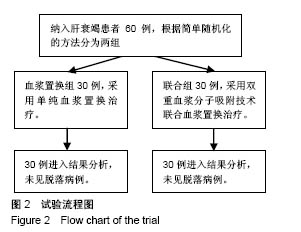
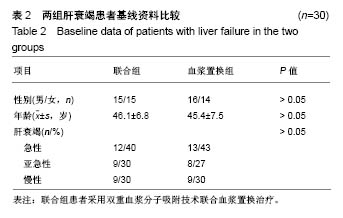
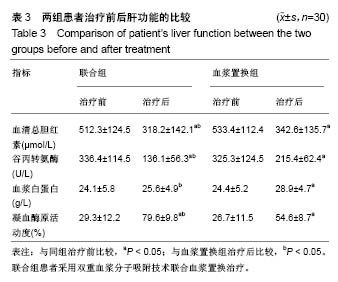
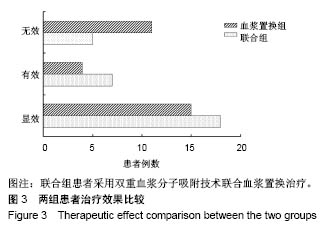
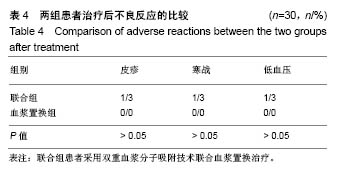
.jpg)
.jpg)
.jpg)